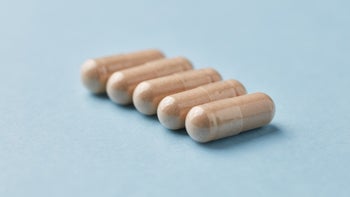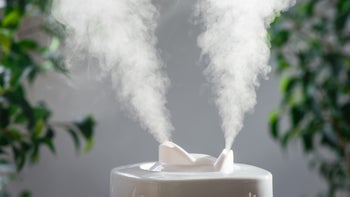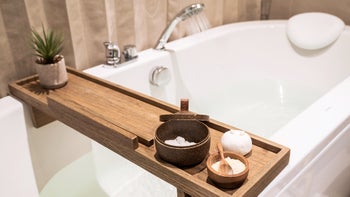
Do Scalp Massages Really Make Your Hair Grow?
Key takeaways:
There isn’t much evidence that scalp massages boost hair growth or thickness.
But scalp massages feel great, and they can help you relax, lessen stress, and relieve headaches.
There are other better treatments for hair loss, including prescription medications and over-the-counter hair care products.
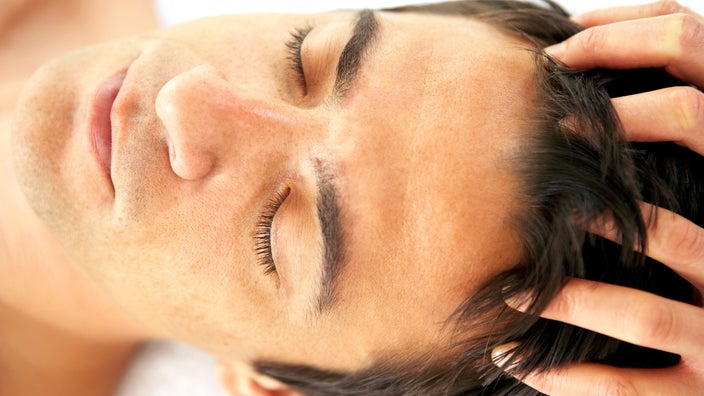
Have you ever had a scalp massage while getting your hair washed at the salon? If so, you know how pleasant it can be. Some research claims that scalp massages support hair health and growth. But what does the science say? And is it worth adding scalp massages to your self-care routine? Here’s what you need to know.
How do scalp massages stimulate hair growth?
There aren’t many large or diverse studies on the benefits of scalp massages. So far, two small studies have looked at whether scalp massages can help hair growth.
In the first study, nine men without hair loss received a 4-minute scalp massage every day for 24 weeks. There wasn’t a significant improvement in hair growth at the end of the study. But, the participants did have measurably thicker hair.
In the second study, more than 300 people with hair loss did daily scalp massages for 11 to 20 minutes. After about 6 months, almost 70% of the participants reported either less hair loss or more regrowth.
Search and compare options
These studies don’t prove that scalp massages stimulate hair growth. But, that doesn’t mean scalp massages won’t work for some people. It’s possible that scalp massages may contribute to fuller and healthier hair by:
Increasing circulation to the scalp
Delivering more nutrients to hair follicles
Physically stimulating hair follicle cells to make healthier hair
Additional scalp massage benefits
Scalp massages aren’t just about hair growth. A few small studies show that there are other scalp massage benefits to your health, like:
Reduced stress: Scalp massages can help lower stress hormones like cortisol, which lowers your heart rate and blood pressure, and improves relaxation. And since stress can cause or contribute to hair loss, lowering stress may improve hair growth.
Migraine relief: Massages that target the scalp and forehead may also help relieve migraines and tension headaches.
Is your shampoo causing hair loss? See the popular shampoos and hair products that have been linked to hair thinning.
Managing female pattern hair loss: From over-the-counter creams to laser therapy, learn about science-backed treatments that can promote hair growth.
Stress-related hair shedding: Read about one woman’s journey dealing with COVID-related hair loss.
How do you massage your scalp for hair growth?
A scalp massage involves gentle pressure — usually with your hands or a small manual massager device. Like traditional massage therapy, it aims to support health and wellness.
There are several ways to add scalp massages to your self-care routine. There aren’t standard guidelines for how to do a scalp massage, but here are some general steps:
Press your fingertips or palms against your scalp with light to medium pressure.
Move your hands in small circles on one part of your scalp for a few seconds. Then, move to another section until you cover your whole head.
Continue for 6 minutes. Repeat 1 to 2 times per day.
For a shower treatment, follow the same steps while applying your shampoo or conditioner. (But be sure to avoid shampoos and other products linked to hair loss.) Instead of your hands, you can also use a tool like a massage brush or scalp massager to help stimulate hair growth.
Some people like to use essential oils during their scalp massage. To do this, add 1 to 2 drops of essential oil — like lavender or peppermint oil — mixed with a carrier oil to your scalp massage.
What causes hair loss?
Hair loss is a common and often treatable concern for many people. But that doesn’t make it any less difficult to face. Understanding the causes of hair loss may help you — and your healthcare team — figure out how to treat it.
Read more like this
Explore these related articles, suggested for readers like you.
The most common cause of hair loss is genetics. People with hereditary hair loss, or androgenic alopecia, inherit genes that make their hair follicles shrink and stop growing. This type of baldness is a gradual process that worsens with age. It typically starts younger and can be more severe than age-related hair loss. Initially, you may notice hair thinning at your temples or crown.
Other common causes of hair loss include:
Age: Gray hair might be the first thing that comes to mind when you think of age-related hair changes. But everyone, regardless of gender, experiences some hair loss with age.
Hormones: Various life stages and health conditions — such as pregnancy and menopause — can change your hormone levels. These hormonal shifts may result in hair loss.
Autoimmune diseases: Hair loss may be a symptom of autoimmune diseases like lupus and psoriasis. With alopecia areata, for example, the immune system attacks healthy hair follicles.
Medications: From anti-acne medications to antidepressants, numerous medications cause hair loss. Hair usually grows back after you stop the medication.
Life stress: Physical or emotional stress from surgery, a crash diet, or other life events can cause temporary hair shedding called telogen effluvium.
Damaging hairstyles and products: Some shampoos, hair products and styling practices — like tight hairstyles and heat styling — may cause irreversible or scarring hair loss.
What other ways can you promote hair growth and thickness?
There are other proven ways to promote hair growth or thickness, whether you're hoping to prevent and reduce hair loss or add some length. The list of promising options is long, but here are a few research-backed methods.
1. Prescription medications
The best treatment for hair loss depends on the cause and severity of your symptoms. That's why it’s important to talk with your medical care team. They might prescribe one of these medications that have been shown to lessen hair loss and improve growth or volume:
2. Over-the-counter (OTC) treatments
Liquid or foam minoxidil, the main ingredient in Rogaine, is available over the counter. Researchers aren't entirely sure how it works. But they do know that minoxidil acts as a vasodilator. That means it opens up blood vessels, which can enlarge hair follicles to allow growth. It may be effective in people with alopecia and other disorders that cause hair loss.
But OTC options don’t end there. Certain shampoos, like those that contain pyrithione zinc, fight fungus that causes dandruff. These and other ingredients can keep your scalp healthy, lessen hair loss, and stimulate hair growth.
Deficiencies in vitamins — such as zinc, iron, and biotin — have also been linked to hair loss. OTC hair-healthy supplements are worth a try if you’re deficient in any of these vitamins. But they won’t help if your levels are normal.
3. Preventive hair care
A strategic hair routine can keep your strands healthy and growing, and it doesn’t have to be complicated or time consuming. Here are some tips to get you started.
Use a conditioner after every wash.
Avoid practices that can cause hair breakage or excess shedding, like over-brushing your hair or wearing tight hairstyles often.
Minimize coloring, relaxing, or perming your hair.
Avoid shampoos that have been linked to hair loss.
And remember that everyone’s hair is different, so you should customize your routine to your needs. For example, the American Academy of Dermatology recommends that people with curly, textured hair brush it while damp. But they advise people with straight hair to let it dry a little before brushing.
The bottom line
A soothing scalp massage may do more than just make you relaxed — it may also help stimulate hair growth or thickness. So far, limited research shows that scalp massages may promote blood flow to the scalp and encourage longer, thicker strands. But there’s a need for more evidence. If you’re experiencing hair thinning, scalp massages may be worth a try. Just keep in mind that there are better, science-backed ways to treat hair loss. Talk with your doctor or other healthcare professional about finding the best treatment plan for you.
Why trust our experts?
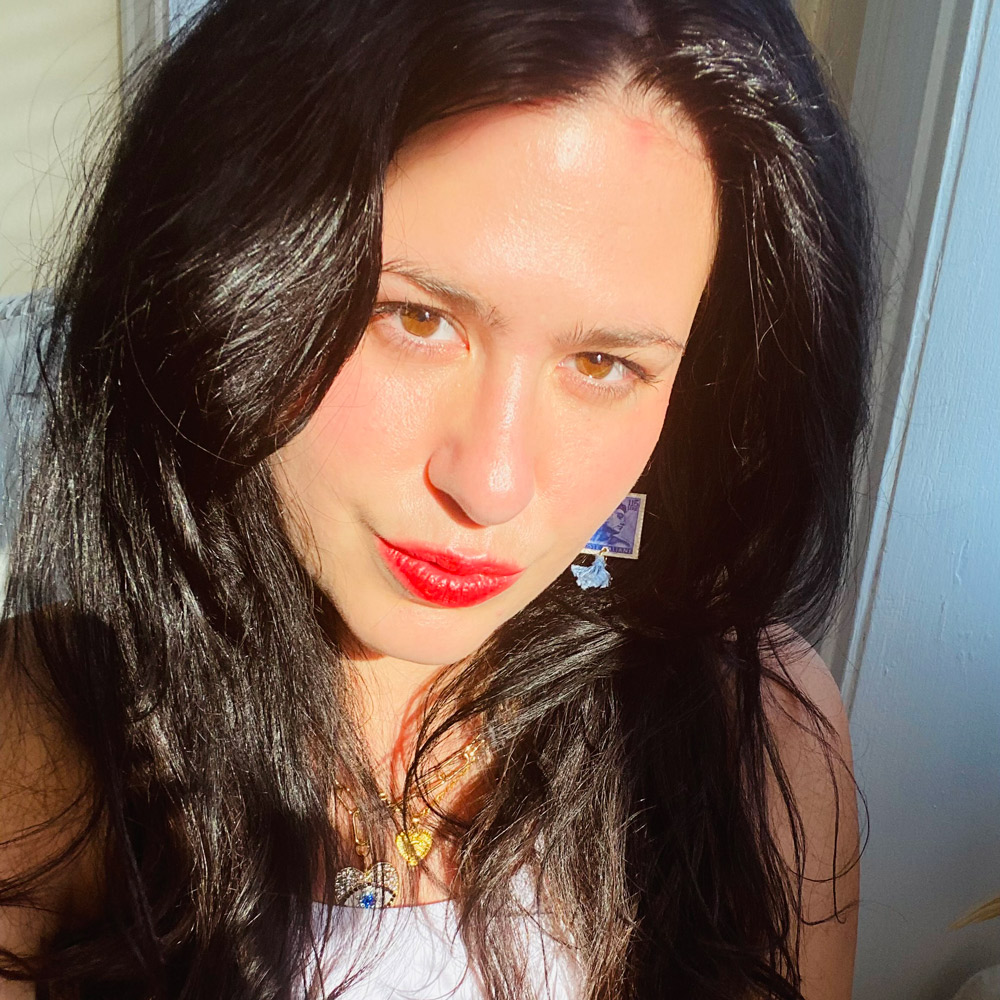


References
American Academy of Dermatology Association. (n.d.). Hair loss: Who gets and causes.
American Academy of Dermatology Association. (n.d.). How to stop damaging your hair.
Berger, R. S., et al. (2003). The effects of minoxidil, 1% pyrithione zinc and a combination of both on hair density: A randomized controlled trial. The British Journal of Dermatology.
English, R. S., Jr., et al. (2019). Self-assessments of standardized scalp massages for androgenic alopecia: Survey results. Dermatology and Therapy.
Guo, E. L., et al. (2017). Diet and hair loss: Effects of nutrient deficiency and supplement use. Dermatology Practical & Conceptual.
Gupta, A. K., et al. (2022). Finasteride for hair loss: A review. The Journal of Dermatological Treatment.
Gupta, A. K., et al. (2021). Minoxidil: A comprehensive review. The Journal of Dermatological Treatment.
Haskin, A., et al. (2016). All hairstyles are not created equal: What dermatologists need to know about black hairstyling practices and risk of traction alopecia (TA). Journal of the American Academy of Dermatology.
Kiderman, A., et al. (2009). The effect of brushing on hair loss in women. The Journal of Dermatological Treatment.
Kim, I. H., et al. (2016). The effect of a scalp massage on stress hormone, blood pressure, and heart rate of healthy female. Journal of Physical Therapy Science.
Koyama, T., et al. (2016). Standardized scalp massage results in increased hair thickness by inducing stretching forces to dermal papilla cells in the subcutaneous tissue. Eplasty.
Levy, L. L., et al. (2013). Female pattern alopecia: Current perspectives. International Journal of Women’s Health.
MedlinePlus. (2022). Aging changes in hair and nails.
Oh, J. Y., et al. (2014). Peppermint oil promotes hair growth without toxic signs. Toxicological Research.
Rostron, S. (2021). The effects of massage therapy on a patient with migraines and cervical spondylosis: A case report. International Journal of Therapeutic Massage & Bodywork.
Suchonwanit, P., et al. (2019). Minoxidil and its use in hair disorders: A review. Drug design, Development and Therapy.
Trüeb, R. M., et al. (2018). Scalp condition impacts hair growth and retention via oxidative stress. International Journal of Trichology.
















